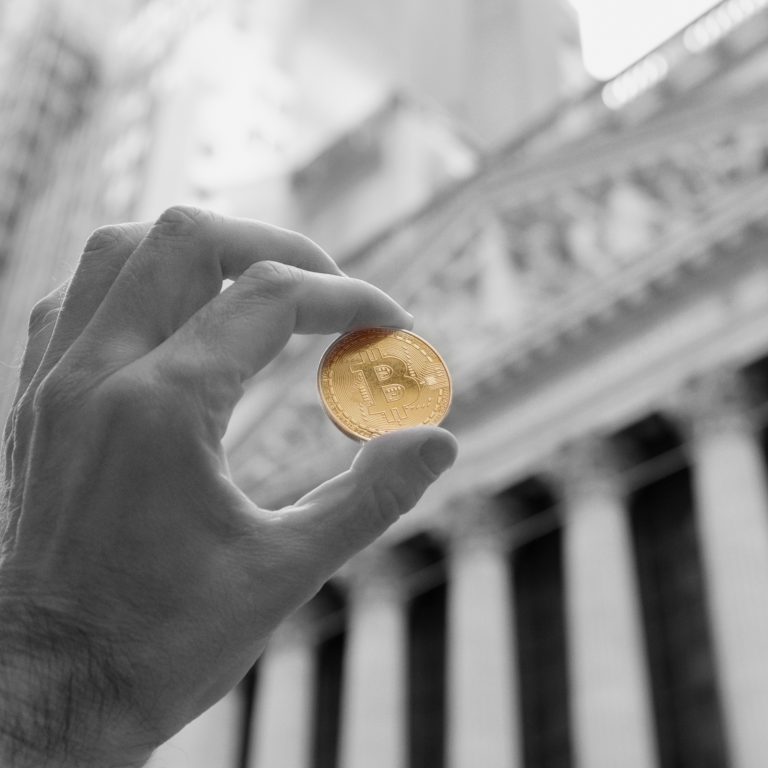Latest news about Bitcoin and all cryptocurrencies. Your daily crypto news habit.

Institutional money is coming. At least that’s been the refrain from desperate cryptocurrency traders for the past six months, praying for an influx of new fiat to shore up prices and float their alt bags. But is it really the case that institutional investors are waiting on the sidelines for the right framework to buy in? At Blockchain Expo in Amsterdam last week, news.bitcoin.com spoke to two exchange leaders who are confident that it’s a question of when, not if, institutional investors pile in.
Also read: Shapeshift CEO Defeats Peter Schiff in Bitcoin Debate
Institutional Money Is Coming but Will It Benefit Retail Investors?
Crypto assets surged by an average of 11.4% on Monday, with bitcoin, predictably, the first to pop. The reason for the pump has been attributed to Coinbase announcing that its custodial crypto service was finally live. The service includes cold storage, an institutional-grade broker-dealer and reporting services, and a client coverage program, and Coinbase is in the process of onboarding hedge funds. But beyond the news fleetingly giving the markets an adrenaline shot, what will the long-term ramifications be of institutional money pouring in, and what’s taken so long?
Kimley Kadoche is the Head of Investor Relations at LGO, which is poised to launch as an institutional-friendly exchange capable of handling large fiat transactions, and Nick Cowan is the CEO of Gibraltar Blockchain Exchange (GBX). It’s aiming to become an institutional-grade token sale platform and digital asset exchange, and is onboarding its existing Gibraltar Stock Exchange (GBS) clients. Both individuals are naturally bullish on the prospects of institutional money entering the crypto market, but have their reasons for being so optimistic, having liaised with many of the big spenders pondering a move.
Step 1: Regulation
 It’s no secret that one of the impediments to institutional investors entering the crypto space is the need for a suitable regulatory framework; hedge funds can’t simply invest their clients’ funds in the same free-and-easy manner as a retail investor. “[GBX] fundamentally believe that the technology is here to stay,” begins Nick Cowan, on bitcoin. “We fundamentally believe in adoption…particularly institutional, but what will accelerate that, I think, is the implementation of certain regulations: consumer confidence, investor protection, transparency, and those sorts of issues, which, at the moment, have been holding back a number of major players who might come into this market.”
It’s no secret that one of the impediments to institutional investors entering the crypto space is the need for a suitable regulatory framework; hedge funds can’t simply invest their clients’ funds in the same free-and-easy manner as a retail investor. “[GBX] fundamentally believe that the technology is here to stay,” begins Nick Cowan, on bitcoin. “We fundamentally believe in adoption…particularly institutional, but what will accelerate that, I think, is the implementation of certain regulations: consumer confidence, investor protection, transparency, and those sorts of issues, which, at the moment, have been holding back a number of major players who might come into this market.”
“In the US there is an appetite [among institutional investors],” says Kimley, “but for now they’re just waiting for something more concrete that offers a real solution. And most important that is SEC and FINRA compliant, because that’s the main issue, is you need to be able to report your crypto trading on the books”.
Step 2: Security
Kimley Kadoche asserts that institutional investors have a “big appetite” for the crypto market, but require a “safe structure that offers them a solution” including custodial services. For such investors, “the infrastructure that you have right now on the market is not super safe. There’s always an issue with the custodian, KYC procedures are not very safe, and also we’re waiting for the SEC to be fully transparent on what regulation and actions they want to take regarding digital assets”.
Nick is also confident that there is “institutional money waiting on the sidelines” but believes “there are concerns about not just the asset, it’s the custody of these things that has to be addressed for institutions to be able to say, ‘Okay, now we are happy and can come in’”. The approach that Coinbase has taken to custodial security is to provide cold storage of broker funds. LGO is taking a different approach and providing decentralized storage, integrated with Ledger, combined with a centralized order book.
Step 3: Liquidity
Because institutional traders are typically going to be buying big, liquidity is a key problem that needs to be solved. Leading cryptocurrencies such as bitcoin and ethereum are much more liquid than in the industry’s earliest days, but a single large order can still move the entire market. “The third [problem that must be solved] is the liquidity,” acknowledges Kimley. “Financial institutions are going to be buying and selling big quantities and they need to have a seller or buyer of them to face them. So you need to be able to provide them what they want. You can’t just go on Coinbase and buy 1,000 bitcoin. Right now, there’s a latency problem and slippage.”
Step 4: Moon?
LGO’s Kimley Kadoche and GBX’s Nick Cowan sensibly wouldn’t be drawn on whether a flood of institutional money would send bitcoin on another moon mission, but acknowledged that its presence can only be a good thing for the crypto economy. Kimley believes it is “going to improve the trust in the market” while Nick asserts: “I think the long term view is that [institutional] adoption will take place, leading to more people getting involved, and that can only be a good thing”.
Institutional money isn’t going to save bitcoin, buy retail investors’ alt bags or spearhead a 1,000-year bull run. But it will certainly add legitimacy to the markets and in the process bring bitcoin, as both an investment vehicle and a device for financial empowerment, to a currently underserved and influential segment of the population. And that can only be a good thing.
Do you think the arrival of institutional money will have a positive effect on the cryptocurrency markets? Let us know in the comments section below.
Images courtesy of Shutterstock, GBX, and LGO.
Need to calculate your bitcoin holdings? Check our tools section.
Disclaimer
The views and opinions expressed in this article are solely those of the authors and do not reflect the views of Bitcoin Insider. Every investment and trading move involves risk - this is especially true for cryptocurrencies given their volatility. We strongly advise our readers to conduct their own research when making a decision.


